Yemeni Food Dishes: Basic Overview
Common Ingredients
Common Cooking Methods
Courses
Meals
Key Taste
Eating Etiquette
Meal Presentation
Culinary Festivals
Influence and Fusion
Popular Types of Yemeni Dishes
-
Cakes and Pastries
In Yemeni cuisine, cakes and pastries are unique expressions of local baking traditions, blending simplicity and rich flavors.
They often feature layered textures, with ingredients like clarified butter, eggs, and yeast.
These baked goods range from sweet honey-infused delights to savory, flaky creations.
-
Pancakes
Pancakes in Yemeni cuisine are characterized by their spongy texture and simple ingredients like flour, yeast, and water.
These pancakes serve as a versatile base for various toppings and are often enjoyed as a part of breakfast.
Their preparation often involves fermentation, embodying the essence of traditional Yemeni cooking methods.
-
Porridge
Yemeni porridge dishes blend grains like wheat with rich broths, creating textures that range from creamy to hearty.
The cooking process is slow and meticulous, ensuring a harmonious blend of flavors and textures.
Porridge in Yemen is more than just a meal; it’s a cultural expression of comfort and hospitality.
-
Rice Dishes
Rice is central to Yemeni cuisine, with dishes showcasing the grain in various forms, from fluffy to moist.
These dishes often combine rice with meats and an array of spices, offering a symphony of flavors.
The use of specific cooking techniques, like using a tandoor oven, makes them staples at both regular meals and festive occasions.
-
Stews
Yemeni stews are hearty, rich, and deeply flavored, often featuring lamb as a primary ingredient.
These stews are simmered for extended periods, allowing the fusion of spices and meats to create complex layers of flavor.
The addition of unique elements like fenugreek condiment enhances the taste profile.
-
Bread and Doughs
Bread and doughs in Yemen are diverse, ranging from flatbreads cooked in traditional ovens to layered, flaky creations.
These breads are often paired with meals, serving as the perfect vehicle for scooping up stews or dipping into sauces.
The use of techniques like frying and baking in clay ovens impart distinct textures and flavors.
Yemeni dishes are culinary creations commonly consumed in Yemen, a West Asian nation. These dishes often incorporate local ingredients and spices, reflecting this West Asian country’s rich culinary heritage, with lamb and rice being prominent choices.
While Yemeni cuisine differs from the specialties of the Middle East, it’s still under several foreign influences, with Ottoman influences in Sanaa and Indian influences around Aden and Mukalla. Nevertheless, Yemen boasts several distinct dishes, such as saltah, its national dish.
Besides saltah, you’ll also get to see other well-known local dishes through a detailed description of their origins, main ingredients, cooking methods, varieties, and serving suggestions.
Here, I also share some features of traditional Yemeni cuisine, how it is renowned in the world and its health benefits.
Then, you can explore some common dishes for regular meals. After reading all this information, you’ll understand more about this cuisine and other foods widely enjoyed in West Asia.
21 Popular Yemeni Dishes with Filters
Here are 21 famous Yemeni dishes, ranked based on their popularity. To improve your exploration, consider using filter options like ingredients, taste, cooking styles, dish types, etc.
In this section, I also give you some essence of Yemeni cuisine by highlighting five key groups: most popular, traditional, national, street food, and exotic delicacies.
Among the most beloved dishes, you’ll find mandi, a spiced meat and rice dish; haneeth, succulent slow-roasted lamb; and saltah, a hearty meat stew.
Saltah, with its meaty broth and fenugreek froth, stands out as Yemen’s national dish.
Street food in the country is commonly snacks or small cakes, ideal for quick and convenient treats.
These dishes do not disappoint adventurous eaters as they use unique ingredients or cooking methods.
Saltah
- National
- Traditional
Saltah is the national dish of Yemen, consisting of hulbah (fenugreek condiment), maraq (meat broth), and zhug (Yemeni hot sauce), cooked in a haradah (hardened clay pot).
Saltah has been around for centuries, with the original being a charitable dish made with leftover ingredients.
Today, saltah has other ingredients, like vegetables, potatoes, rice, or scrambled eggs. Saltah is mostly popular in the Northern regions as a Yemeni food for lunch, with khubz mulawah (flatbread baked in a clay oven) to scoop the stew.
Fahsa
- Traditional
Fahsa is a famous Yemeni lamb stew containing lamb cutlets and lamb broth. When the cooking process finishes, locals add hulbah and other spices to enhance fahsa’s flavor.
As lamb is a local staple meat, this lamb stew becomes part of the regular meal, especially during lunch.
Haneeth
- Traditional
Haneeth is a popular slow-roasted lamb from Yemen, made by rubbing bone-in lamb chunks with spices. Native people roast these lamb chunks in a tannour oven for hours at low temperatures for a tender texture.
When done, haneeth is served with rice. Today, this roasted lamb is well-known throughout the Arabian Peninsula and other countries worldwide.
Mandi
- Traditional
Mandi is an iconic dish of meat and rice originating in Yemen. Meat, like chicken, lamb, camel, or goat, is mandi’s primary ingredient. The meat is boiled with different spices, and the stock is later used to cook rice. Both are cooked in a tandoor oven or tannour (primitive clay oven).
Today, mandi has spread to other countries, like India, Egypt, Turkey, and the Levant. In Arabic, mandi means “dew,” referring to its dewy, moist texture.
Samak Mofa
- Exotic
- Traditional
Samak mofa is a traditional fish dish from the Arabian Gulf, popular in both Yemen and Saudi Arabian cuisine.
This dish features a whole fish, such as red snapper or sea bass, that is marinated in a mixture of spices, including olive oil, lemon juice, garlic, coriander, cumin, paprika, and turmeric.
The fish is then grilled, creating a flavorful dish with a golden char and tender texture. It’s often served with sides like saffron rice or Arabic flatbread and can be accompanied by sauces like tahini sauce or muhammara.
Fattah
- Traditional
Fattah is a traditional Yemeni breakfast dish consisting of various types of pastries and is often accompanied by Yemeni coffee or tea.
Fattah is part of a warm morning meal that may also feature legumes, eggs, roasted meat, or kebab. These ingredients are usually served with a type of bread, either on the side or as part of a sandwich.
This dish is a staple in Yemeni cuisine and reflects the cultural importance of offering a generous and hearty meal, especially in the mornin.
Maraq
- Traditional
Maraq is a rich meat broth with roots in Yemen, including lamb, chicken, seafood, and spices. Maraq means “broth” in Arabic, showcasing the essence of this meat broth. Maraq is popular today in Oman, Ethiopia, Somalia, and the Persian Gulf’s Arab countries.
Local chefs boil the meat with onions and spices. When the meat is tender, it’ll be served with rice, while the remaining stock is poured into a bowl as a soup. People usually squeeze lime juice before eating for more flavors.
Zhug
- Traditional
Zhug is a famous hot sauce from Yemen with several names: bisbas or sahawiq. Zhug is usually made with hot peppers and seasoned with black cumin, coriander, garlic, olive oil, and parsley.
Depending on the color and ingredients, zhug has different names. For example, green sahawiq is called sahawiq akhdar, and red ones are called sahawiq ahmar. With additional Yemeni cheese, it’s called sahawiq bel-jiben.
Several versions include black pepper, cardamom, caraway seeds, lemon juice, and wazif (dried baby sardines). Originally, zhug was made with 2 stones, 1 big and 1 small, to crush all the ingredients. However, the modern method only requires a food processor or mortar and pestle.
Shakshouka
- Traditional
Shakshouka is a traditional dish with its origin claimed by various countries like Yemen, Turkey, Egypt, and Morocco. Shakshouka uses eggs and tomato sauce as the main ingredients, along with cayenne pepper, cumin, garlic, olive oil, onion, paprika, and peppers.
Modern shakshouka has evolved into numerous variations with different spices and sweet levels. Several places add meat, chili pepper, cheese, or turmeric to create their own versions. The locals often eat shakshouka, a Yemeni food for breakfast, with bread.
Shafoot
- Traditional
Shafoot, or shafuta, is a well-loved traditional starter in Yemen made with buttermilk, leek, lahoh (pancake-like flatbread) or shredded bread, yogurt, and zhug. You’ll likely see shafuta in Northern Yemeni, particularly during Ramadan months.
Shafoot starts by mixing lahoh with other ingredients and refrigerating the whole mixture until lahoh absorbs all liquid. Due to this cooking technique, shafuta is often served cold.
Malawach
- Traditional
Malawach, or melawwah, is a flatbread traditionally associated with Yemenite Jews, with its name meaning “board-like bread”. Melawwah includes several thin puff pastry layered brushed with fat or oil, resembling a thick pancake.
This board-like bread is usually fried in a pan and served with hard-boiled eggs, resek (grated tomato condiment), and zhug. Another similar version is called khubz mulawah, baked in a tannur (primitive clay oven).
Modern accompaniments are more diverse: baba ghanoush (roasted eggplant dip), muhammara (Aleppo spicy dip), etc. Several places even offer sweet malawach sets with honey or jam.
Bint Al-Sahn
- Traditional
Bint al-sahn, shortened as sabayah, is one of the most popular Yemeni desserts. While its name means “honey cake”, sabayah is like a flaky pastry with multiple paper-thin layers of clarified butter, eggs, flour, and yeast.
Sabbath is usually served with honey, melted ghee, and a sprinkle of black cumin when it’s warm and freshly baked. Bint al-sahn is mostly homemade so you won’t find many local restaurants selling this “honey cake”.
Aseedah
- Traditional
Aseedah is a common dish known in Yemen under several names, such as aseed. Aseedah involves mixing wholemeal wheat with boiling water and salt until thickened. Then, native people coat their bare hands with oil to shape the dough and place it in a wooden bowl.
The locals sometimes add hot chili tomato paste or hulbah to shaped aseedah dough before pouring beef, chicken, or lamb stock over it. Aseed is often served hot as a Yemeni food for dinner, lunch, and breakfast.
Besides wholemeal wheat, bleached wheat is also used nowadays. And sweet aseedah replaces hulbah and tomato paste for honey.
Kubaneh
- Traditional
Kubaneh is a Yemenite Jewish bread made with cornmeal, sorghum flour, or wheat flour. The first 2 choices are for regular kubaneh, and the last is for Sabbath and holiday versions. Black cumin, honey, or sugar is sometimes added to the bread dough for extra flavor.
Then, kubaneh is baked in a sealed, greased pot overnight. The locals will serve kubaneh hot the next morning with haminados (braised eggs) and resek. Another version includes sheep tail or other meat cuts in the dough before baking, usually served for women after childbirth.
Still, the best part of kubaneh is qa’eh, the hard lower crust, because of its delicate flavor. So, make sure to request it when you order kubaneh in this West Asian country.
Murtabak
- Street Food
Murtabak, or motabbaq, is a famous Yemeni street food, with many describing it as a pan-fried bread or stuffed pancake. Murtabak is basically a pan-fried crepe with different stuffings.
In this West Asian country, murtabak is often stuffed with chicken, goat, or mutton. Vegetarian motabbaq is also available. The pancakes are then folded and cut into square portions.
Zalabiyeh
- Traditional
Zalabiyeh is a special treat for winter among Yemenite Jews. Local zalabiyeh is made with a batter of soft yeast and deep-fried in a soapstone pot with oil and optional honey. Several people even add black cumin to the batter for extra aroma and flavor.
Zalabiyeh is fried until both sides turn golden, and it tastes best when served hot with honey or sugar.
Masoob
- Exotic
- Traditional
Masoob is a traditional banana-based pudding from Yemen. Today, this banana pudding is well-loved in Saudi Arabia and the UAE.
Masoob’s main ingredients include overripe bananas, ground flatbread, cheese, cream, dates, and honey.
Kabsa
- Exotic
- Traditional
Kabsa is a mixed rice dish with roots in Yemen, often consisting of 4 main components: basmati rice, meat, spices, and vegetables. As kabsa is greatly versatile, any ingredient is suitable.
For example, the meat option ranges from standard beef, chicken, fish, and shrimp to unique camel, goat, or lamb. As for spices, bay leaves, black pepper, cardamom, cinnamon, cloves, nutmeg, and saffron often appear.
The locals have 3 regular cooking methods for kabsa’s meat. The first is cooking the meat in a deep hole in the ground, which is usually practiced in ancient times. Other techniques are grilling the meat on flat stones over burning embers or cooking the meat in a pressure cooker.
Harees
- Traditional
Harees is a traditional Yemeni food consisting of bulgur or cracked wheat and meat as the main ingredients. Harees’ texture is like a combination of a gruel and a porridge.
The wheat is often coarsely ground or boiled before simmering with meat and butter or sheep tail fat in water. After straining the broth, the harees is seasoned to your liking and served with cinnamon, clarified butter, and sugar as garnishes.
Harees is traditionally a dish for Eid, Easter, Ramadan, and weddings made by the wealthy and shared with neighbors.
Jachnun
- Traditional
Jachnun is a Yemenite Jewish pastry for Shabbat morning, using thinly rolled dough. The dough is traditionally brushed with Samneh, a clarified butter seasoned with hulbah. However, today, any regular clarified butter or shortening works.
Jachnun’s cooking process usually starts on Friday morning, so it’ll be done on Shabbat (Saturday) morning. The rolled dough pieces are baked or steamed in a covered pot at low temperatures until they turn dark-colored and taste caramelized.
As jachnun’s dough is similar to malawach (board-like bread), hard-boiled eggs, resek, and zhug are also regular partners.
Lahoh
- Traditional
Lahoh, or canjeero and lahuh, is a spongy pancake-like flatbread commonly eaten in Yemen. Thanks to the Yemenite Jewish immigrants, this flatbread is also available in Israel. Lahoh is a homemade treat and a street food sold by peddlers for breakfast.
Lahoh mainly includes sorghum flour, yeast, white cornmeal, warm water, and salt. Sweeter canjeero adds eggs.
When all these ingredients are mixed until creamy and soft, the mixture is commonly fermented overnight and baked on a taawa (metallic round stove) or regular pan.
What Are Common Dishes for Regular Meals in Yemen?
Yemeni cuisine varies from region to region, but several dishes commonly appear in regular meals. I’ve listed all popular options regarding breakfast, lunch, and dinner.
Feel free to like and share this Yemeni dish list with others to bring this excellent knowledge to more people. And state all your questions and thoughts in the comment section, and I’ll reply as soon as possible.


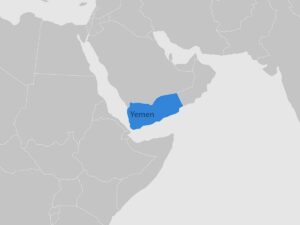

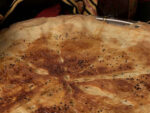
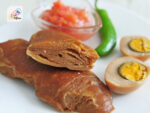
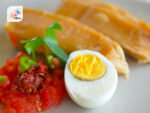
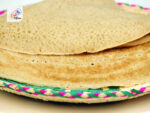
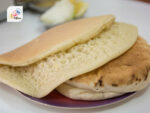
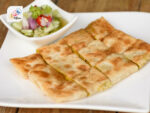
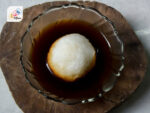
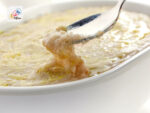
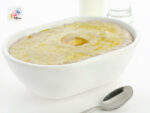
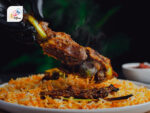
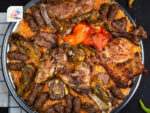

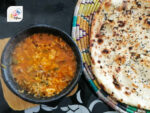
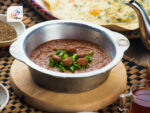
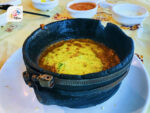
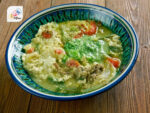
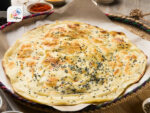

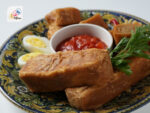
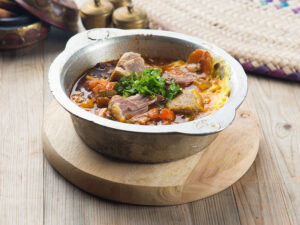
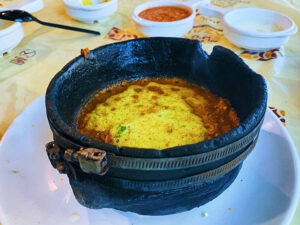
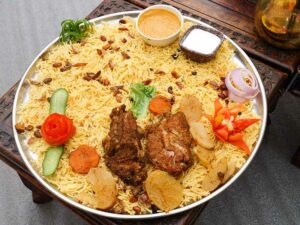
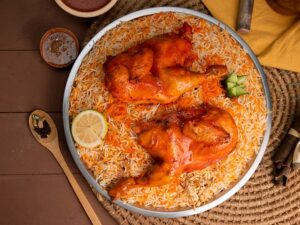
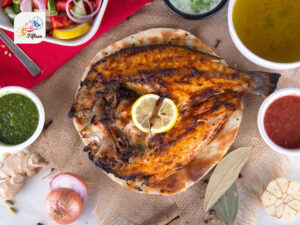
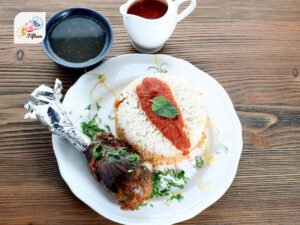
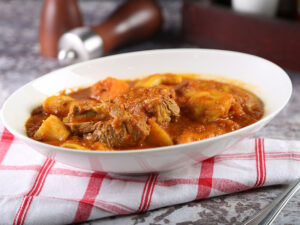
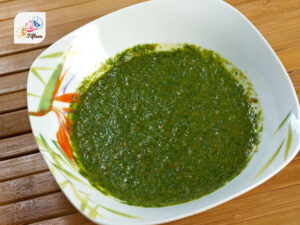
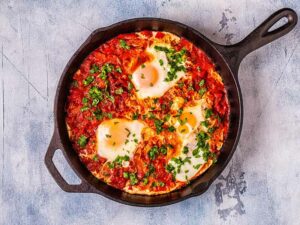
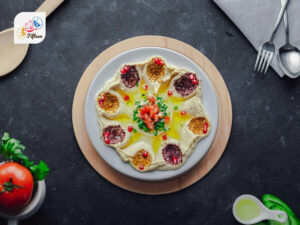
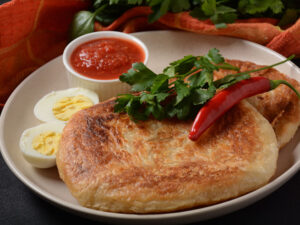
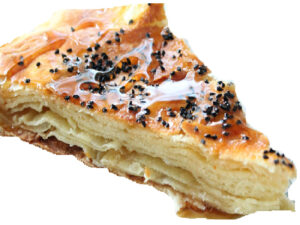
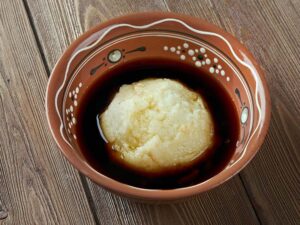
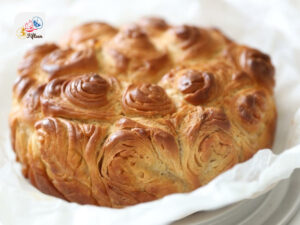
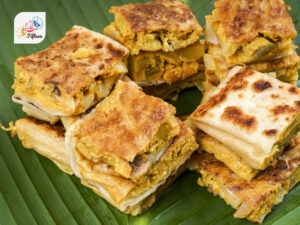

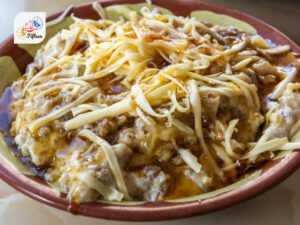
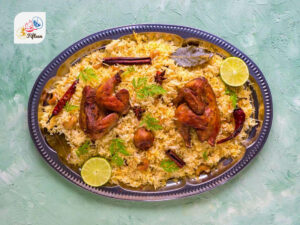
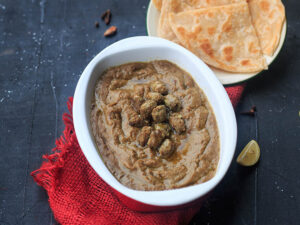
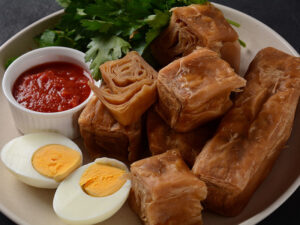
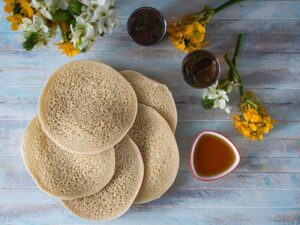
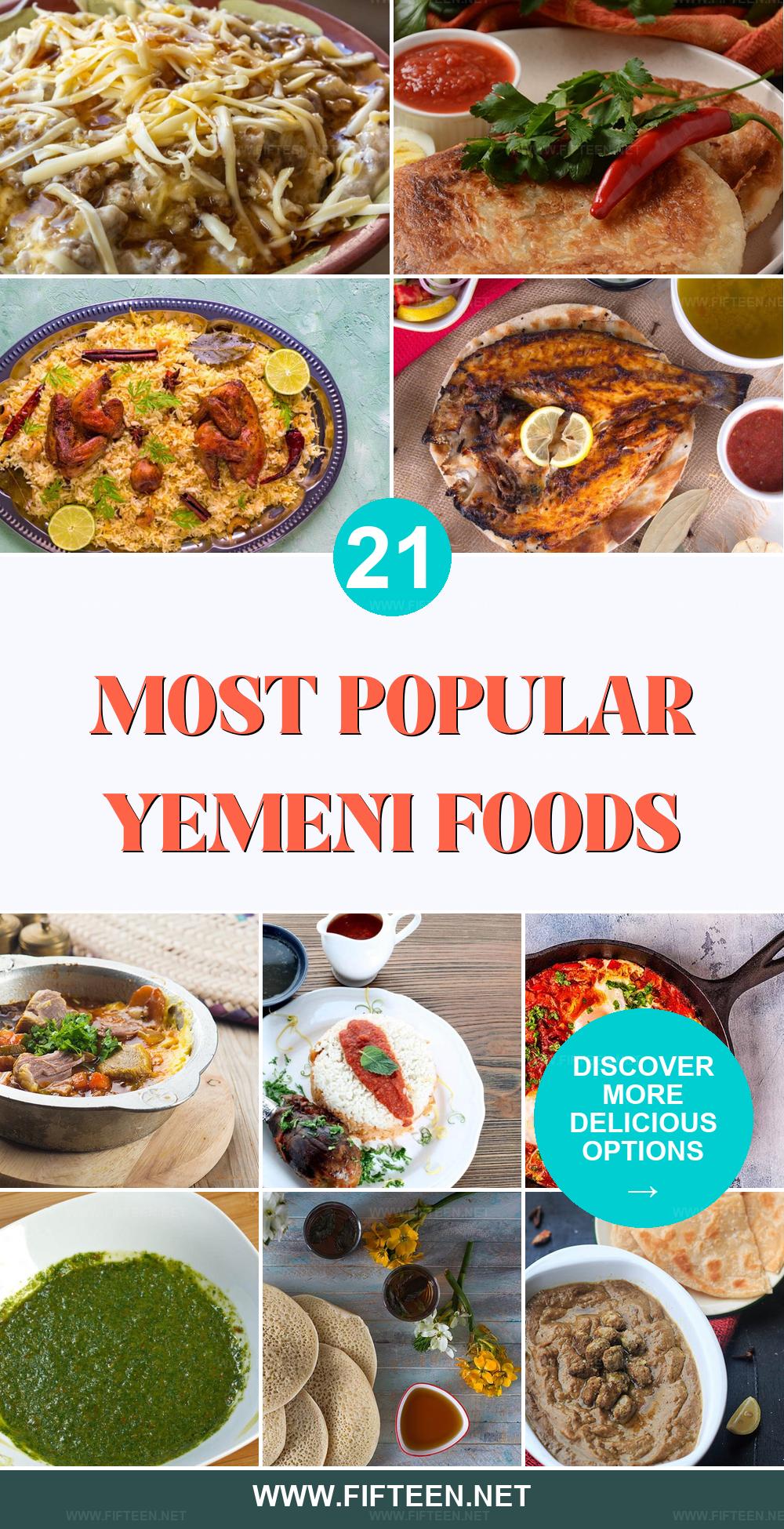
Jamie Scott
Editor in Chief, Senior Content Writer
Expertise
Home Cooking, Meal Planning, Recipe Development, Baking and Pastry, Food Editor, Cooking-video Maker, Western Food Evaluation Expert
Education
Le Cordon Bleu College of Culinary Arts
Local Community College, New York, NY
Jamie Scott is a skilled culinary expert and content creator specializing in Western cuisine. With over 15 years in the culinary field and formal training from Le Cordon Bleu, Paris, Jamie deeply understands how to blend nutrition with delicious flavors. His passion for cooking matches his commitment to making healthy eating accessible and enjoyable.
On Fifteen.net, Jamie brings a fresh perspective to classic dishes and beverages, offering readers insightful recipes, cooking tips, and a fresh view on meal planning that emphasizes taste, health, and simplicity.